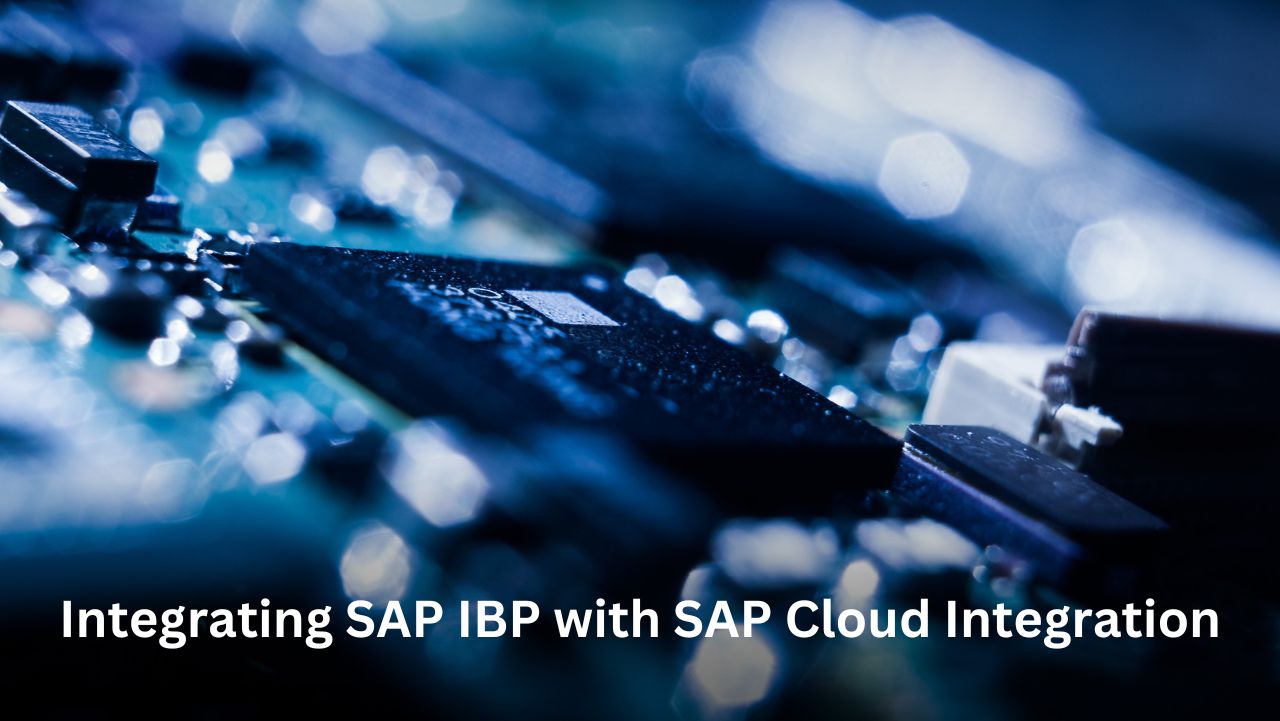Integrating SAP IBP (Integrated Business Planning) with SAP Cloud Integration (SCI) enables seamless data exchange between SAP and non-SAP systems. This integration helps businesses improve supply chain efficiency, demand forecasting, and overall operational planning.
This guide explains the integration process, its benefits, key components, and best practices.
What is SAP IBP?
SAP Integrated Business Planning (SAP IBP) is a cloud-based solution for supply chain management. It helps companies with:
- Demand Planning – Predicting future demand for products.
- Inventory Optimization – Managing stock levels efficiently.
- Sales & Operations Planning (S&OP) – Aligning supply and demand plans.
- Supply Planning – Ensuring smooth production and distribution.
- Response & Supply Execution – Managing real-time supply chain changes.
SAP IBP provides real-time analytics and AI-driven insights to improve decision-making.
What is SAP Cloud Integration (SCI)?
SAP Cloud Integration (SCI) is a middleware service in SAP Integration Suite. It connects SAP and non-SAP applications in the cloud and on-premises.
SCI allows businesses to:
- Automate data flow between systems.
- Securely transfer data in real-time.
- Improve collaboration across departments.
- Reduce manual data entry and errors.
SCI uses pre-built integration content to simplify connectivity with SAP IBP.
Why Integrate SAP IBP with SAP Cloud Integration?
Integration between SAP IBP and SAP Cloud Integration offers several advantages:
✅ Real-Time Data Flow – Ensures up-to-date supply chain information.
✅ Better Decision-Making – Provides accurate forecasts and reports.
✅ Reduced Manual Work – Automates data synchronization.
✅ Improved Supply Chain Visibility – Connects multiple business functions.
✅ Scalability – Supports business growth with flexible integration.
Without integration, businesses face data silos, delayed updates, and poor decision-making.
Key Components of SAP IBP and SAP Cloud Integration
To integrate SAP IBP with SCI, businesses need the following components:
1. SAP IBP
- The core system for supply chain planning.
- Requires CPI-DS (Cloud Platform Integration for Data Services) for data extraction and transformation.
2. SAP Cloud Integration (SCI)
- Middleware for secure data exchange.
- Uses iFlows (Integration Flows) to connect SAP IBP with other systems.
3. SAP S/4HANA or SAP ECC (Optional)
- The source system providing master data (e.g., products, customers).
- Sends demand and supply data to SAP IBP.
4. APIs and Web Services
- Enable communication between SAP IBP and other applications.
- Use OData Services and REST APIs for data retrieval and processing.
Steps to Integrate SAP IBP with SAP Cloud Integration
Follow these steps to set up the integration:
Step 1: Set Up SAP Cloud Integration
- Log in to SAP BTP (Business Technology Platform).
- Navigate to SAP Integration Suite.
- Create an Integration Package.
- Configure Authentication & Security Settings.
Step 2: Configure SAP IBP
- Enable CPI-DS (Cloud Platform Integration for Data Services).
- Define Data Sources and Destinations.
- Set up Data Extraction Jobs for sending information to SCI.
Step 3: Create Integration Flows (iFlows)
- Use Pre-Built iFlows for SAP IBP in SAP Cloud Integration.
- Modify iFlows to match business requirements.
- Set up Mapping & Transformation for data alignment.
Step 4: Test & Monitor the Integration
- Run Test Scenarios to check data flow.
- Monitor Logs & Alerts in SCI.
- Fix any Errors or Performance Issues.
Step 5: Deploy & Go Live
- Finalize configurations.
- Move integration to the Production Environment.
- Train users on Monitoring & Troubleshooting.
Best Practices for SAP IBP and SAP Cloud Integration
To ensure successful integration, follow these best practices:
Use Pre-Built Content
SAP provides standard iFlows that reduce development time.
Secure Data Transfer
Use OAuth, SAML, or TLS encryption to protect data during transmission.
Monitor Performance
Regularly check SCI logs and IBP dashboards for issues.
Optimize Data Mapping
Ensure data from SAP S/4HANA, ECC, or third-party systems matches SAP IBP formats.
Automate Processes
Schedule CPI-DS jobs to update SAP IBP without manual intervention.
Common Challenges & Solutions
| Challenge | Solution |
| Data Format Mismatch | Use data mapping tools in SCI. |
| Authentication Issues | Configure correct OAuth & SAML settings. |
| Slow Data Processing | Optimize iFlows and reduce unnecessary API calls. |
| Monitoring Failures | Set up alerts & notifications for quick issue resolution. |
Future Trends in SAP IBP & Cloud Integration
With evolving technology, businesses can expect:
- AI & Machine Learning Enhancements – Smarter supply chain insights.
- More API-First Integrations – Easier connections to third-party applications.
- Improved Security Protocols – Enhanced data encryption.
- Faster Data Processing – Reduced latency in SAP IBP updates.
SAP is continuously improving its cloud integration capabilities for better business agility.
Frequently Asked Questions (FAQs)
1. Can SAP IBP integrate with non-SAP systems?
Yes, SAP IBP can connect with third-party systems via SAP Cloud Integration APIs and Web Services.
2. How long does it take to set up SAP IBP integration?
The setup time varies based on business complexity but usually takes 4-6 weeks.
3. What is the role of CPI-DS in SAP IBP integration?
CPI-DS is a data extraction tool that moves data between SAP IBP and other systems.
4. What authentication methods are used in SAP Cloud Integration?
SCI supports OAuth, Basic Authentication, and SAML for secure access.
5. How do I troubleshoot integration issues?
- Check SCI logs for errors.
- Verify API connectivity.
- Ensure correct data mapping.
Conclusion
Integrating SAP IBP with SAP Cloud Integration enhances supply chain visibility, automates processes, and improves data accuracy. With the right configuration and best practices, businesses can achieve seamless connectivity and better decision-making.
By following this guide, you can successfully integrate SAP IBP with SAP Cloud Integration for improved efficiency and operational excellence.

